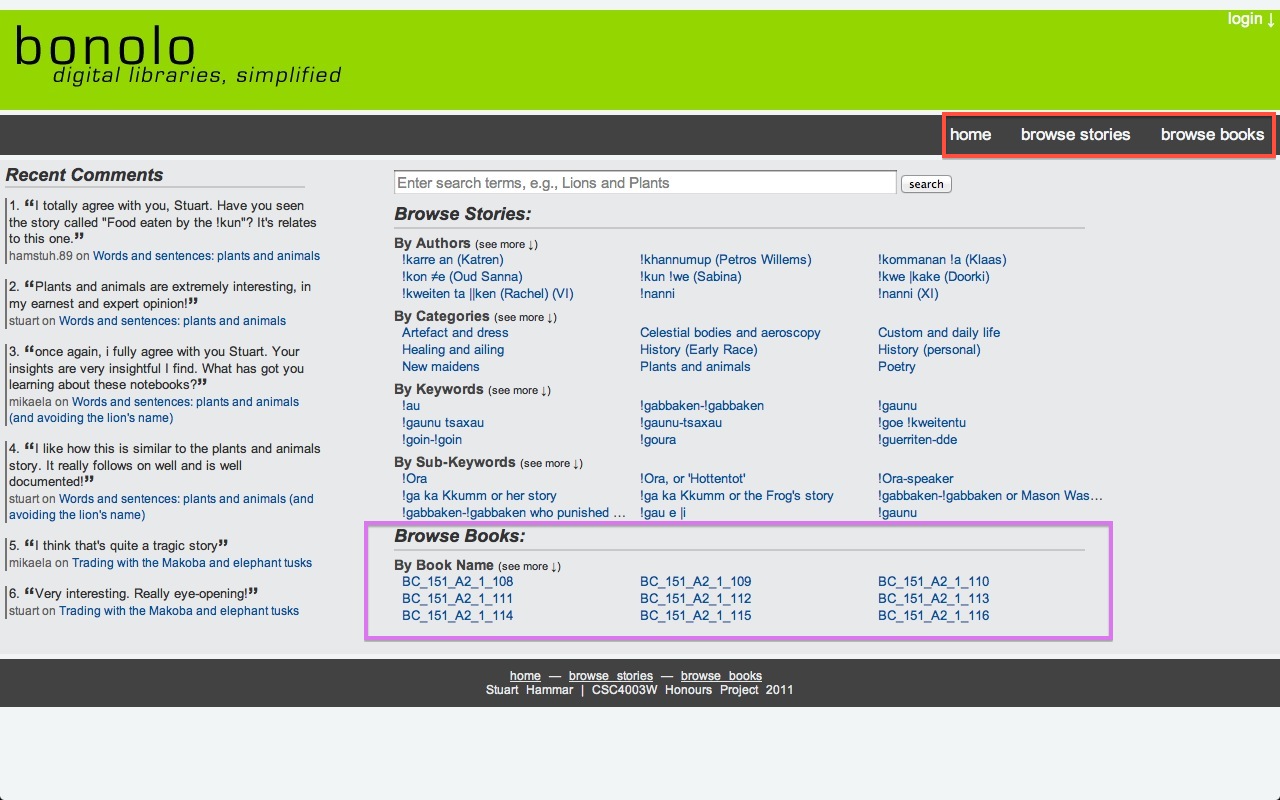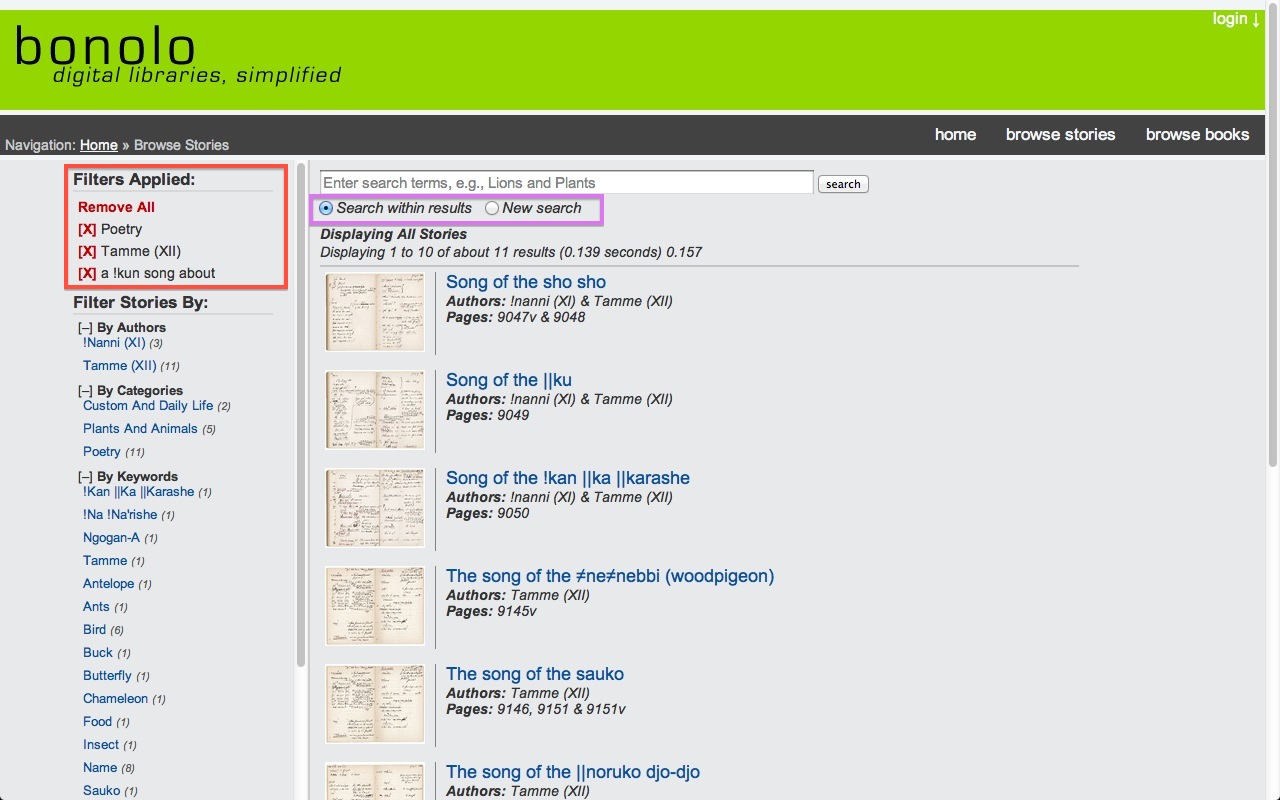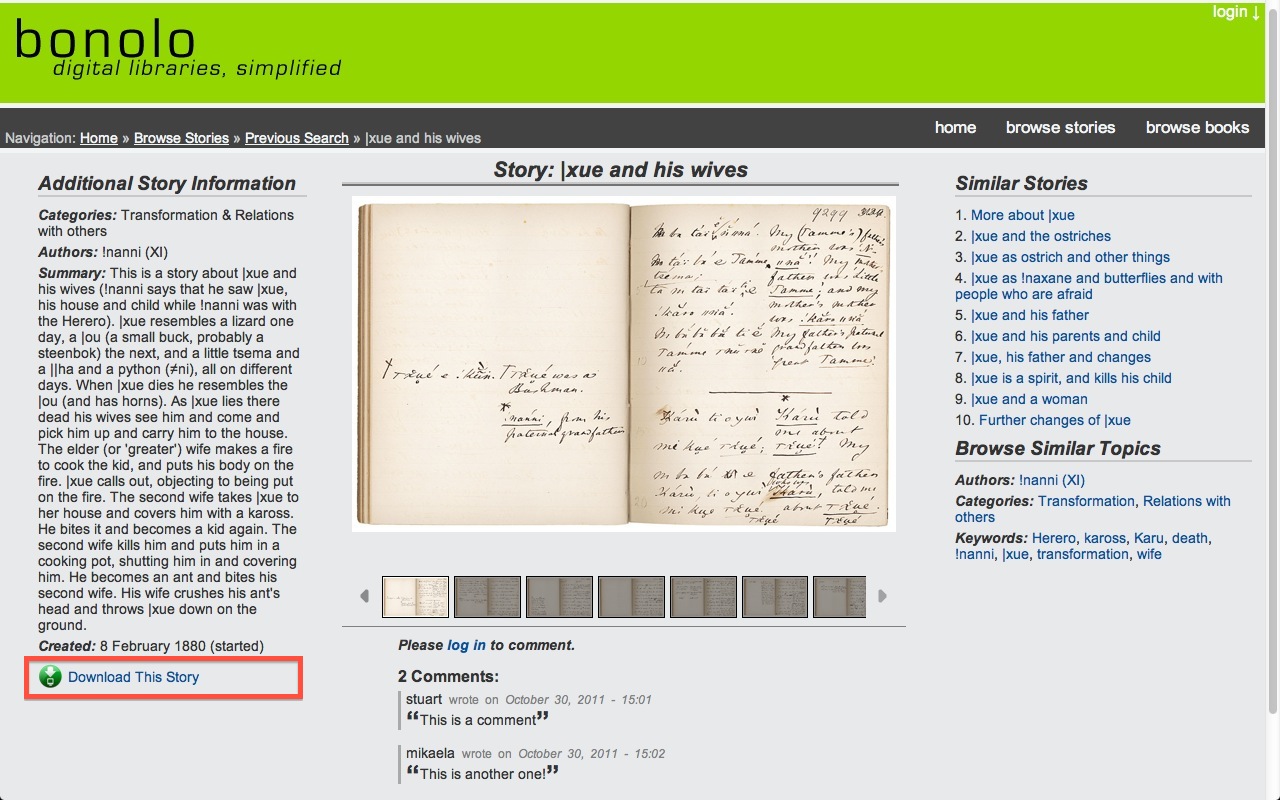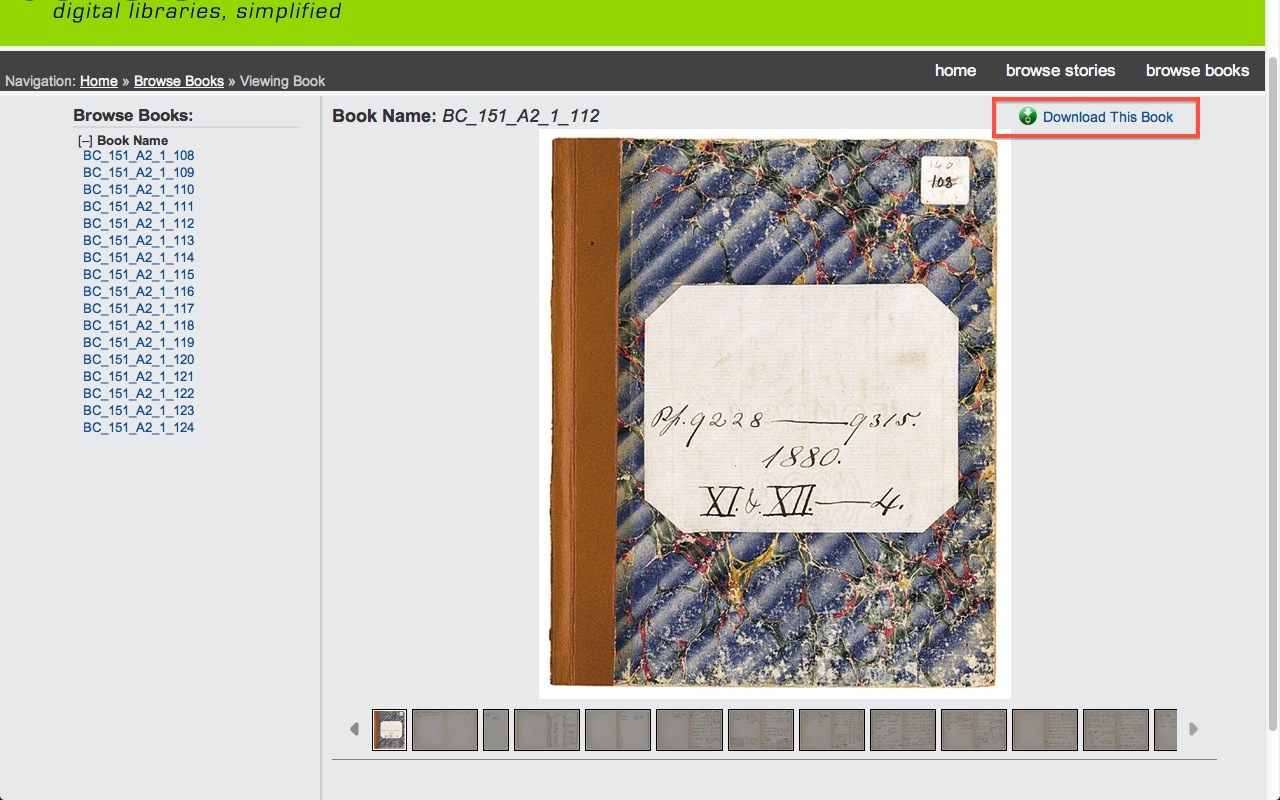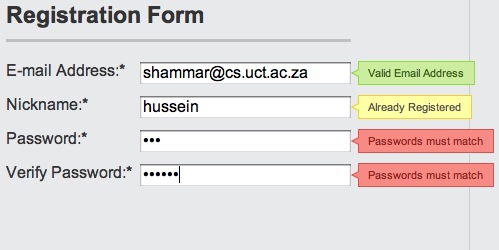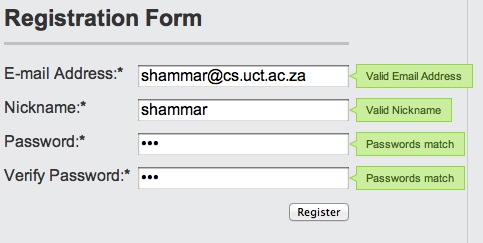Design & Implementation
After conducting background research into digital repository systems, it was decided that there be a set of core features in the Bonolo end-user interface. The core feature needed, is the ability to explore the information within the collection through searching and browsing.
However, there was room for additional features to be added to the system. To ensure that the features of the interface be successfully implemented, a User-Centred Design (UCD) approach was adopted. Each of the development iterations involved either a focus group or user testing being conducted. This aided in the identification of what users expected from a digital repository system, the kinds of additional features they would expect to find in the interface, along with the current issues that were present in the system.
The Bonolo project is not an attempt at making a usable interface by implementing various heuristic evaluations, usability testing and other Human Computer Interaction (HCI) techniques. Instead, the user testing involved was to gather insight into what users expected to see from the system and whether there were any suggestions for improvements. The focus here is to identify and deliver a set of services that would perform as the user expected.
Functionality
The following functionality is provided by the end-user interface:
Search Indices
Search indices are created by the Solr search library. This allows for the metadata to be searched rapidly.
Search & Browse
Search and browse are the primary features in this interface. They allow the end-user to access and discover the digital objects.
Viewing Stories
This allows a user to view more information about a story, e.g., its metadata, its pages, suggested stories and annotations.
Viewing Books
This allows a user to view a book from cover-to-cover.
Annotations & Registration
A user can register for a Bonolo account. They are then able to comment on stories. Also, they will receive email notifications when another user writes in the same thread as them.
Exporting Images
When viewing a story or book, the user is able to download the images in a compressed zip archive.
Configurability
A simple command-line application allows the user to customise the end-user interface.
Iteration 1: Feasibility Prototype
The aim of the feasibility prototype was to decide on the technologies that were going to be used in the final system and to have a primary function of the interface working.
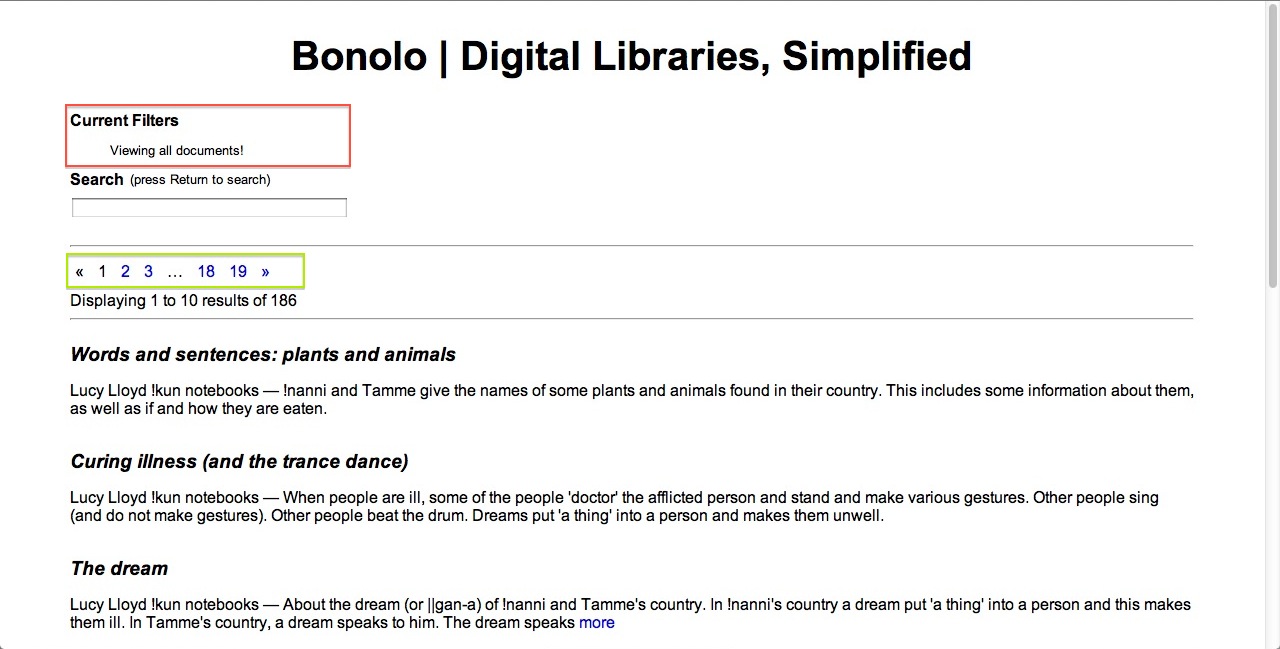
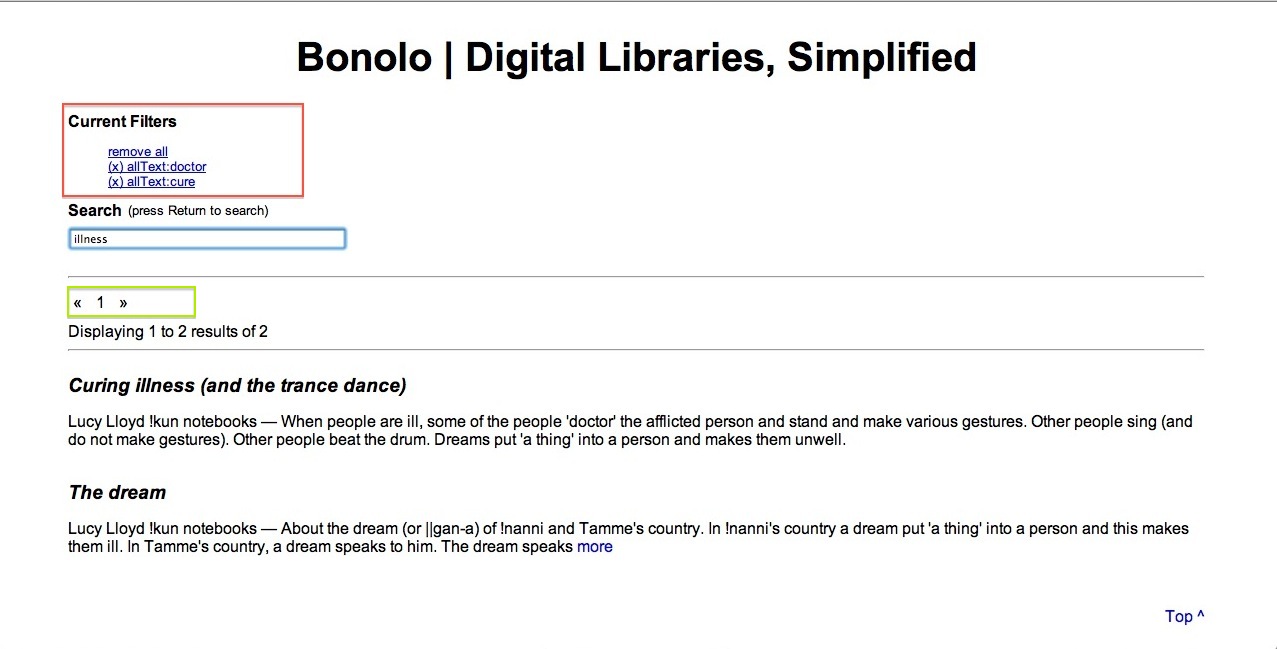
Iteration 2: First Implementation Prototype
The goal of the second developmental iteration was to have a functioning prototype that had all of the core features present (search and browse), as well as some additional features. However, to determine the kinds of additional features to be added needed requirements gathering to be conducted. Therefore, a focus group was held, and a set of additional features was derived.
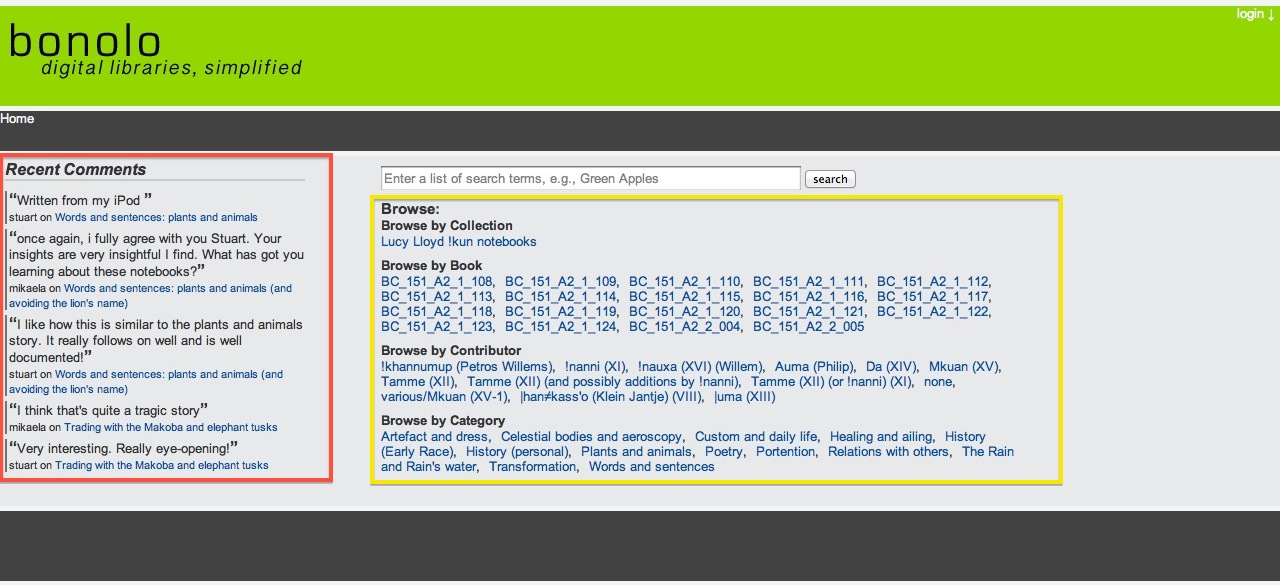
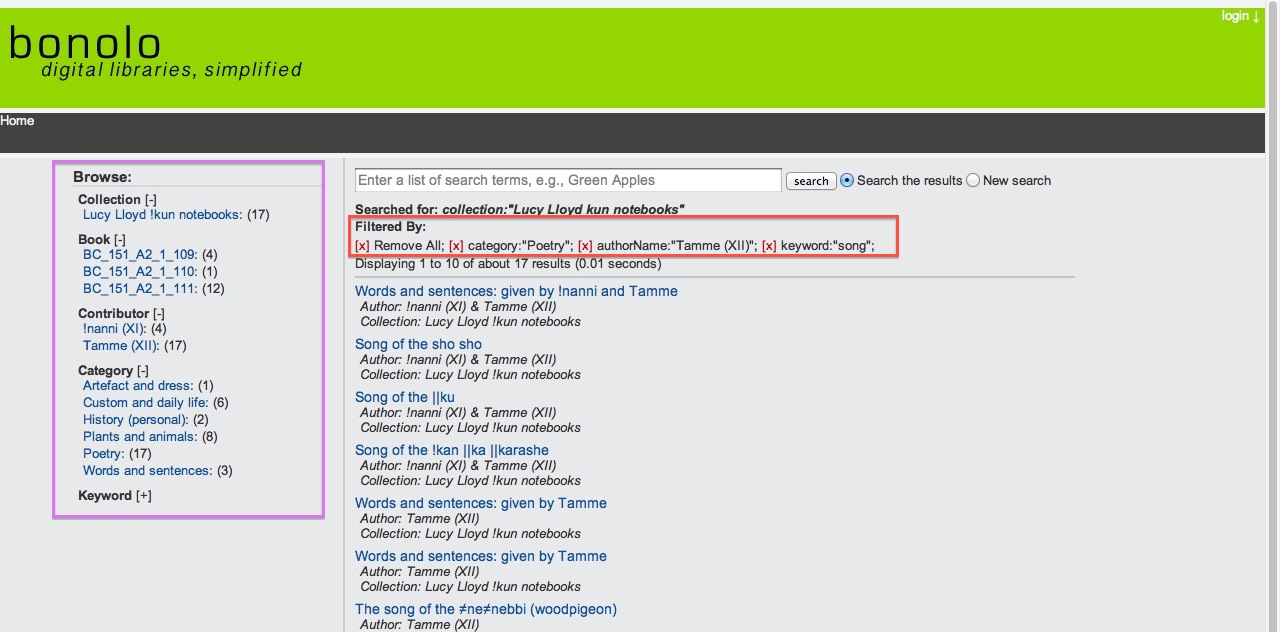
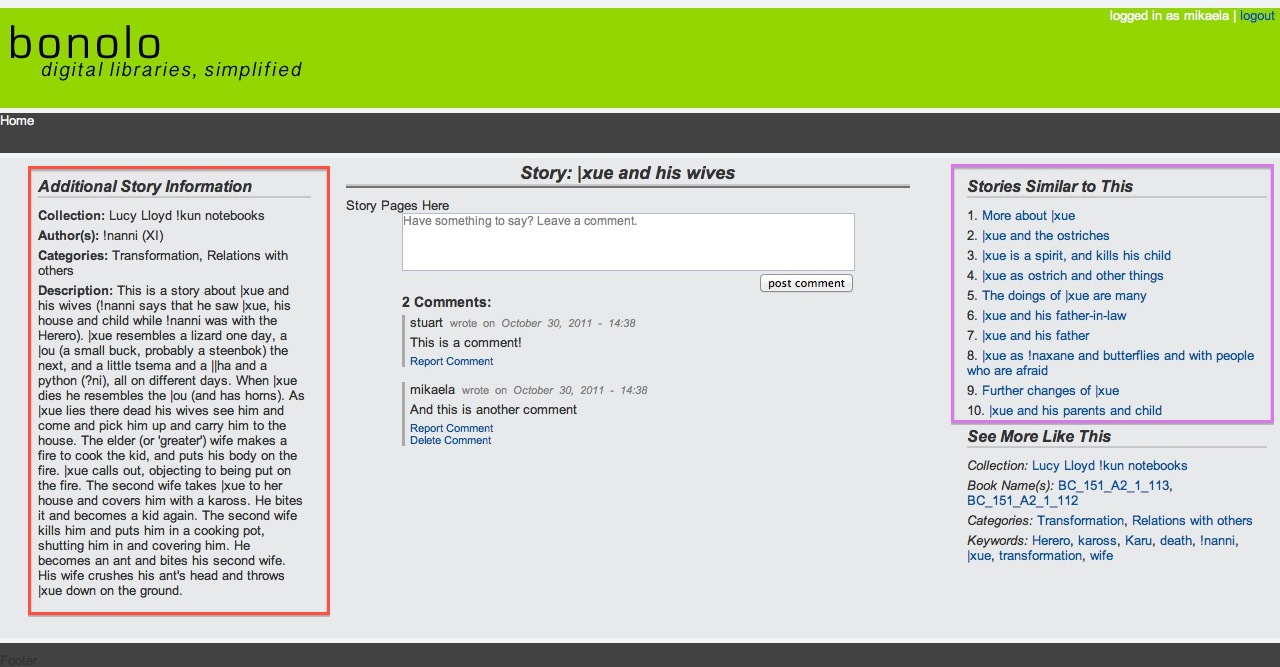
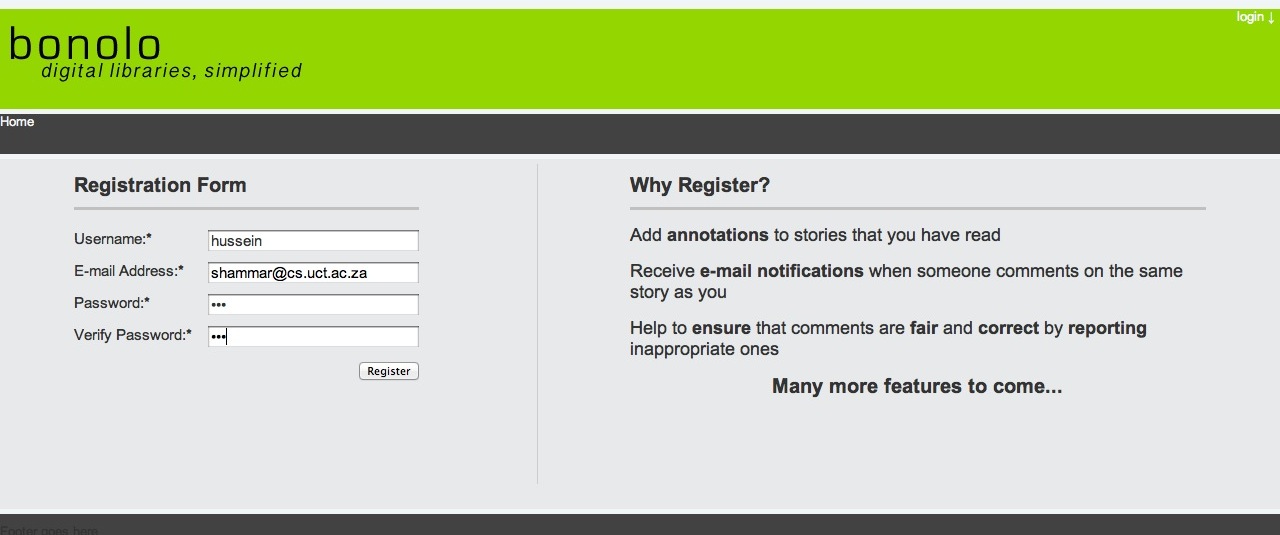
Iteration 3: Final System Implementation
The final system implementation was expected to have the complete feature set discussed and agreed upon at the beginning of the second iteration, along with fully functioning search and browse features. This final system would then be used in conducting a final user experience evaluation and performance evaluation.
